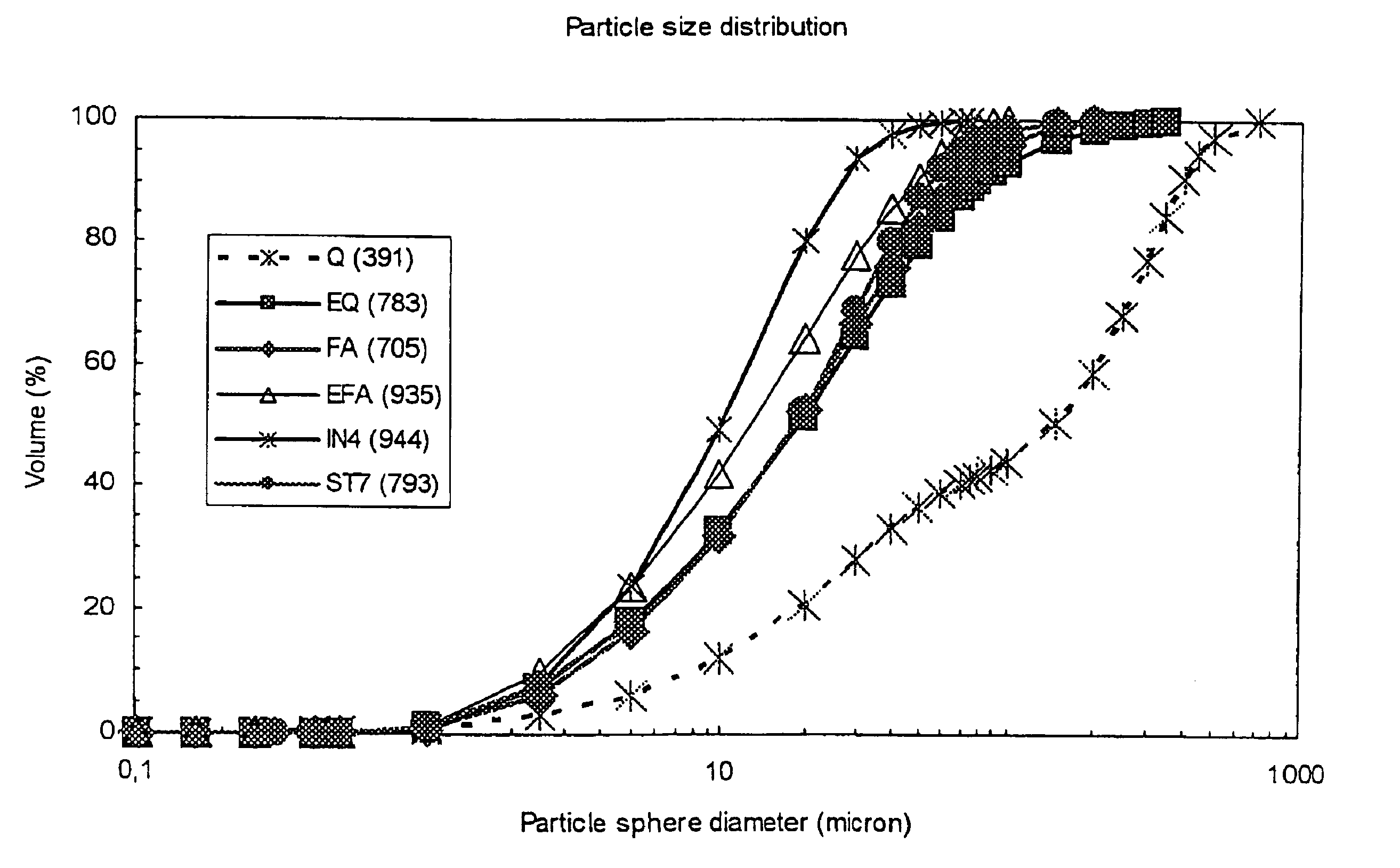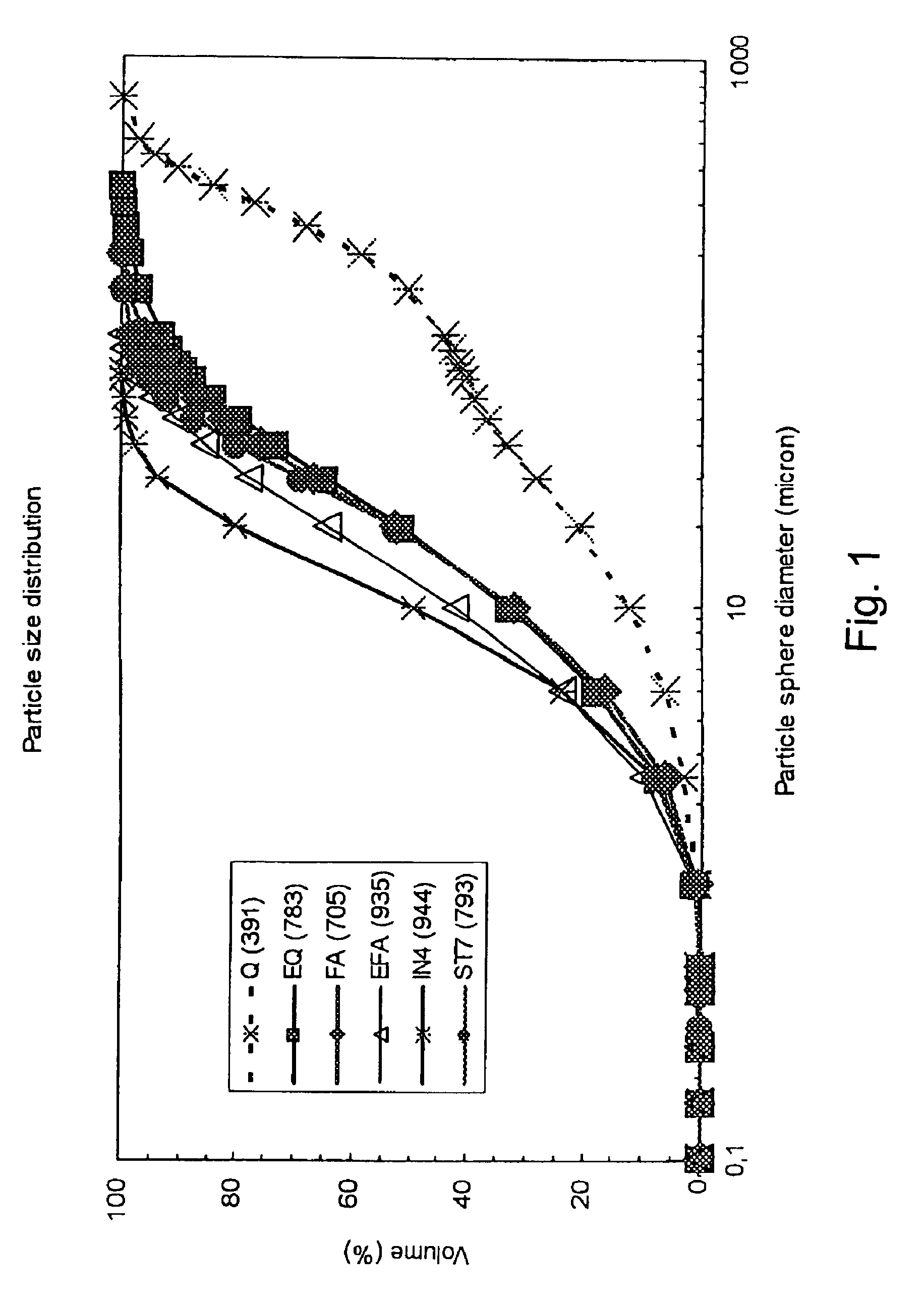Process for producing blended cements with reduced carbon dioxide emissions
a technology of blended cement and carbon dioxide, applied in the direction of climate sustainability, solid waste management, sustainable waste treatment, etc., can solve the problems of not providing more than 20-25% of portland clinker replacement, significant negative influence on cement performance, and reduced setting time. , to achieve the effect of reducing carbon dioxide emissions
- Summary
- Abstract
- Description
- Claims
- Application Information
AI Technical Summary
Benefits of technology
Problems solved by technology
Method used
Image
Examples
examples
[0039]The following materials were used in these experiments: Standard Portland cement CEM I 42.5 according to EN-197, or Type I according to ASTM C 150, fly ash Class (FA), blast furnace slag (BFS), and quartz filler (Q). Chemical compositions of the materials are presented in Table 6.
[0040]The cementitious supplementary materials were subjected to separate grinding in the vibrating mill VBM 1518 to achieve a specific surface approximately 1500 cm2 / g (Blaine).
[0041]Then the fillers were mixed in a dry state with a highly reactive dry cement mixture produced according to European Patent Specification No. EP 0696262 and containing 99% of PC and 2% of fly ash Class F. The mixing of the components was performed with a mixer called “Tonimix”, manufactured in Germany, with a rotational speed of 280 rpm for 3 min. to obtain a homogeneous blend.
[0042]The blends were subjected to further grinding in a rotating ball mill to achieve the specific surface of about 4500 cm2 / g (Blaine).
[0043]Duri...
PUM
| Property | Measurement | Unit |
|---|---|---|
| Percent by mass | aaaaa | aaaaa |
| Percent by mass | aaaaa | aaaaa |
| Specific surface area | aaaaa | aaaaa |
Abstract
Description
Claims
Application Information
 Login to View More
Login to View More - R&D
- Intellectual Property
- Life Sciences
- Materials
- Tech Scout
- Unparalleled Data Quality
- Higher Quality Content
- 60% Fewer Hallucinations
Browse by: Latest US Patents, China's latest patents, Technical Efficacy Thesaurus, Application Domain, Technology Topic, Popular Technical Reports.
© 2025 PatSnap. All rights reserved.Legal|Privacy policy|Modern Slavery Act Transparency Statement|Sitemap|About US| Contact US: help@patsnap.com


